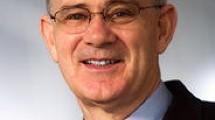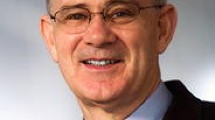Abstract
The following article is an edited transcript based on the Von Hippel Award presentation given by Howard K. Birnbaum of the University of Illinois at Urbana- Champaugn on December 4, 2002, at the Materials Research Society Fall Meeting in Boston. The award citation states, “Through innovative use of a wide range of novel experimental tools, Howard K. Birnbaum has made seminal contributions to our understanding of intrinsic point defects, hydrogen in metals, and graun-boundary segregation, especially as these effects relate to mechanical properties. He has also stimulated, directed, and influenced interdisciplinary research throughout the materials community.” This presentation summarizes the major phenomenological observations associated with hydrogen effects on fracture and the viable mechanisms that can account for these observations. It is shown that there are three fracture mechanisms that are consistent with the experimental observations and that the operative fracture mechanism depends on the type of system and the conditions under which it is exposed to hydrogen in aggressive environments.
Similar content being viewed by others
References
D.E. Hugiies, Sci. Am. (July 17, 1880) Suppl. 237.
S. Gahr and H.K. Birnbaum, Scripta Metall. 10 (1976) p. 635.
D.G. Westlake, Trans. ASM 62 (1969) p. 1000.
C.D. Beachem, Abstr. 5th Spring Meet. of the Metallurgical Society of AIME (1973) p. 65.
A.R. Troiano, Trans. ASM 52 (1960) p. 54.
R.A. Oriani and P.H. Josephic, Acta Metall. 25 (1977) p. 979.
T.B. Flannagan, N.B. Mason, and H.K. Birnbaum, Scripta Metall. 15 (1981) p. 109.
M.L. Grossbeck and H.K. Birnbaum, Acta Metall. 25 (1977) p. 125.
D.S. Shih, I.M. Robertson, and H.K. Birnbaum, Acta Metall. 36 (1988) p. 111.
I.M. Robertson and H.K. Birnbaum, Acta Metall. 34 (1986) p. 353.
T. Tabata and H.K. Birnbaum, Scripta Metall. 18 (1984) p. 231.
P. Sofronis and H.K. Birnbaum, J. Mech. Phys. Solids 43 (1995) p. 49.
M.L. Jokl, V. Vitek, and C.J. McMahon Jr., Acta Metall. 28 (1980) p. 1479.
W.T. Geng, A.J. Freeman, R. Wu, C.B. Gellerand, and J.E. Raynolds, Phys. Rev. B 60 (1999) p. 7149.
J. Lufrano and P. Sofronis, Acta Mater. 46 (1998) p. 1519.
J.P. Hirth and J.R. Rice, Metall. Trans. A 11A (1980) p. 1501.
S. Gahr and H.K. Birnbaum, Acta Metall. 26 (1978) p. 1781.
D.F. Teter, I.M. Robertson, and H.K. Birnbaum, Acta Mater. 49 (2001) p. 4313.
Additional information
Howard K. Birnbaum is an emeritus faculty member of the University of Illinois at Urbana-Champaugn. He served as director of the Frederick Seitz Materials Research Laboratory (MRL) at the university from 1987 until 1999. During that time, he built the MRL into a multidisciplinary research center and made it a leading center for materials research.
Recognition for Birnbaum’s work includes membership in the National Academy of Engineering and fellow status in the American Academy of Arts and Sciences; the Minerals, Metals, and Materials Society; the Japanese Institute of Metals; the American Physical Society; the American Society for Metals; and the American Association for the Advancement of Science. He is also a member of the Materials Research Society, where he served on the Council from 1994 to 1996. Among his awards are a Guggenheim Fellowship (1967), the Department of Energy Prize for Outstanding Research in Metallurgy and Ceramics (1984), the Robert F. Mehl Gold Medal (1986), and the Department of Energy Prize for Outstanding Sustauned Research in Metallurgy and Ceramics (1988).
Birnbaum received his BS (1953) and MS (1955) degrees in metallurgy from Columbia University and his PhD degree (1958) in metallurgy from the University of Illinois at Urbana-Champaugn. He began teaching at the University of Chicago in 1958, joined the faculty of the University of Illinois as an associate professor in 1961, became head of the Department of Energy Metals and Ceramics Program in the MRL at the University of Illinois in 1984, and subsequently was named director of the MRL. He also worked at AERE Harwell, Sandia National Laboratories, Exxon Research Laboratory, and Kyoto University.
Birnbaum can be reached by e-maul at hbirnbau@uiuc.edu.
Rights and permissions
About this article
Cite this article
Birnbaum, H.K. Hydrogen Effects on Deformation and Fracture: Science and Sociology. MRS Bulletin 28, 479–485 (2003). https://doi.org/10.1557/mrs2003.143
Published:
Issue Date:
DOI: https://doi.org/10.1557/mrs2003.143




